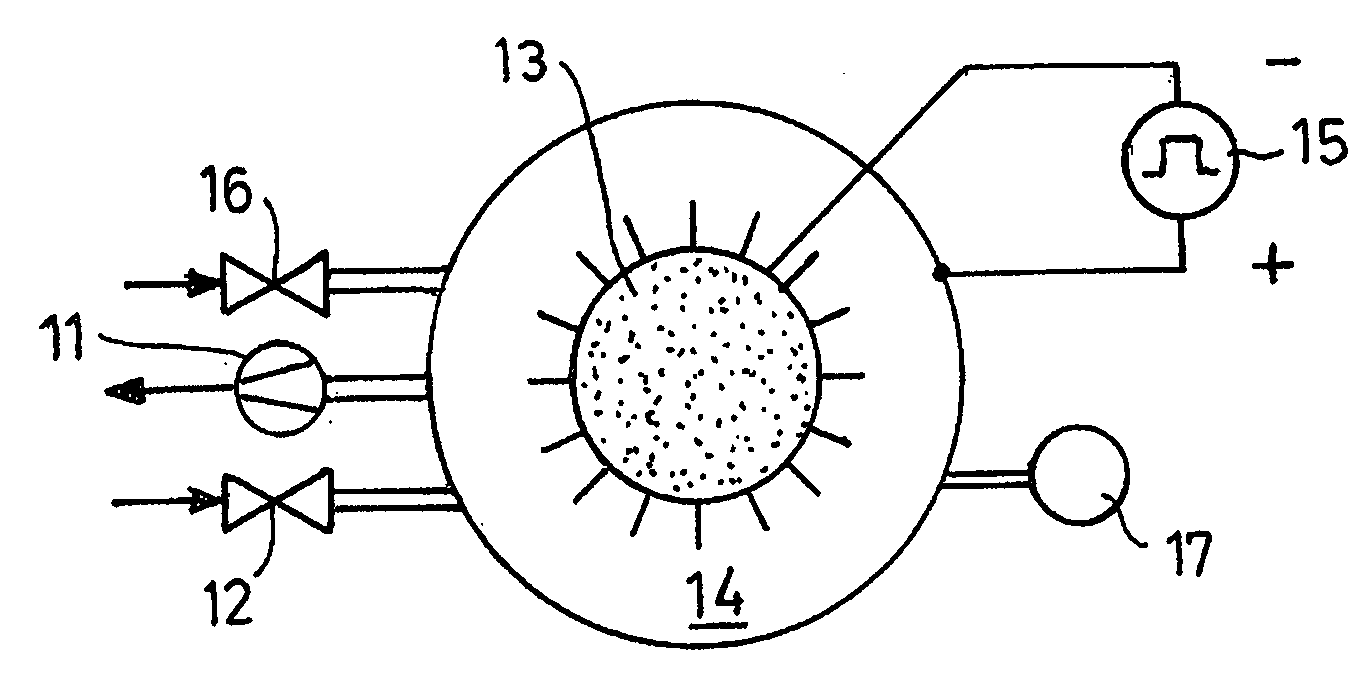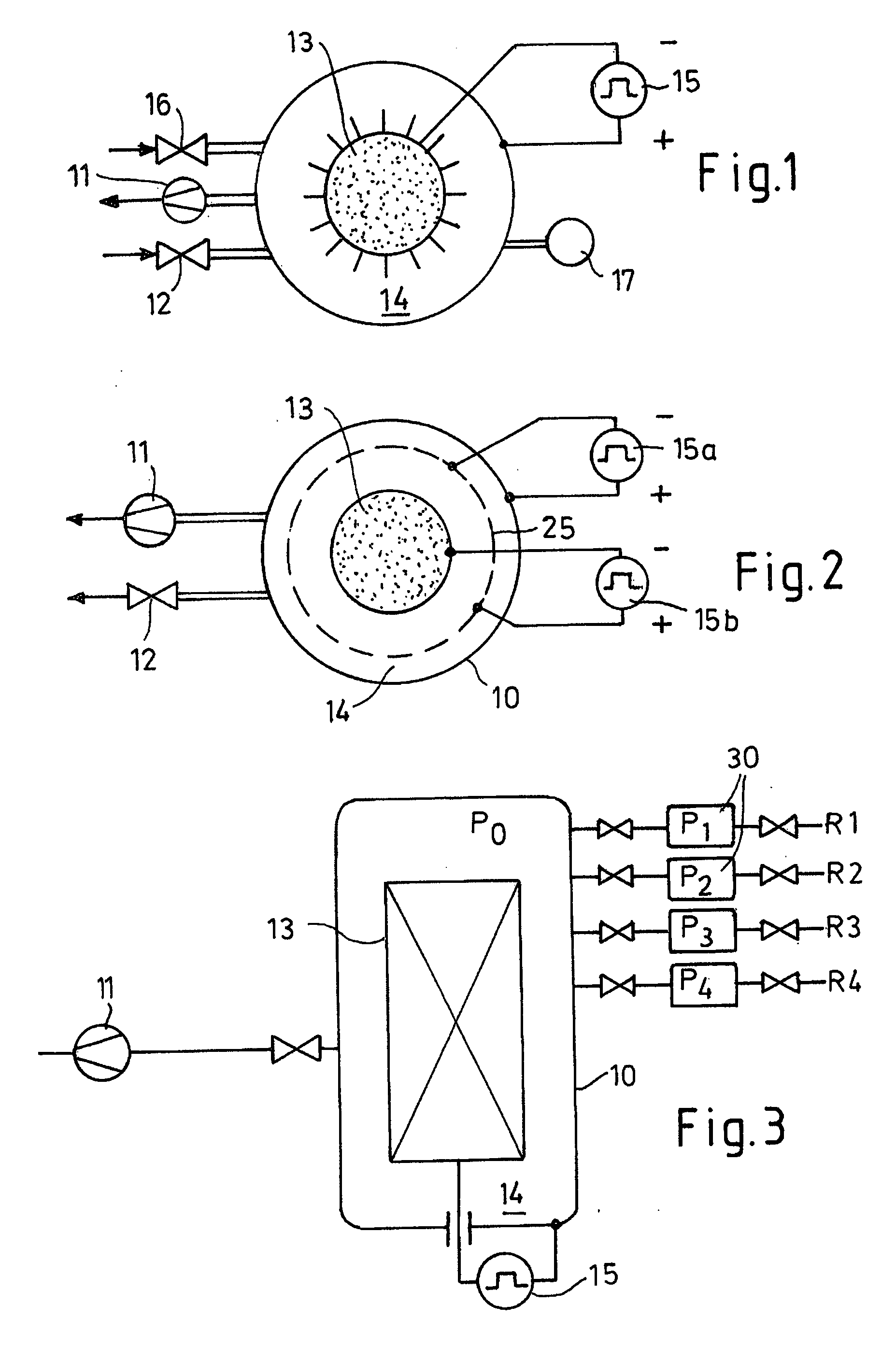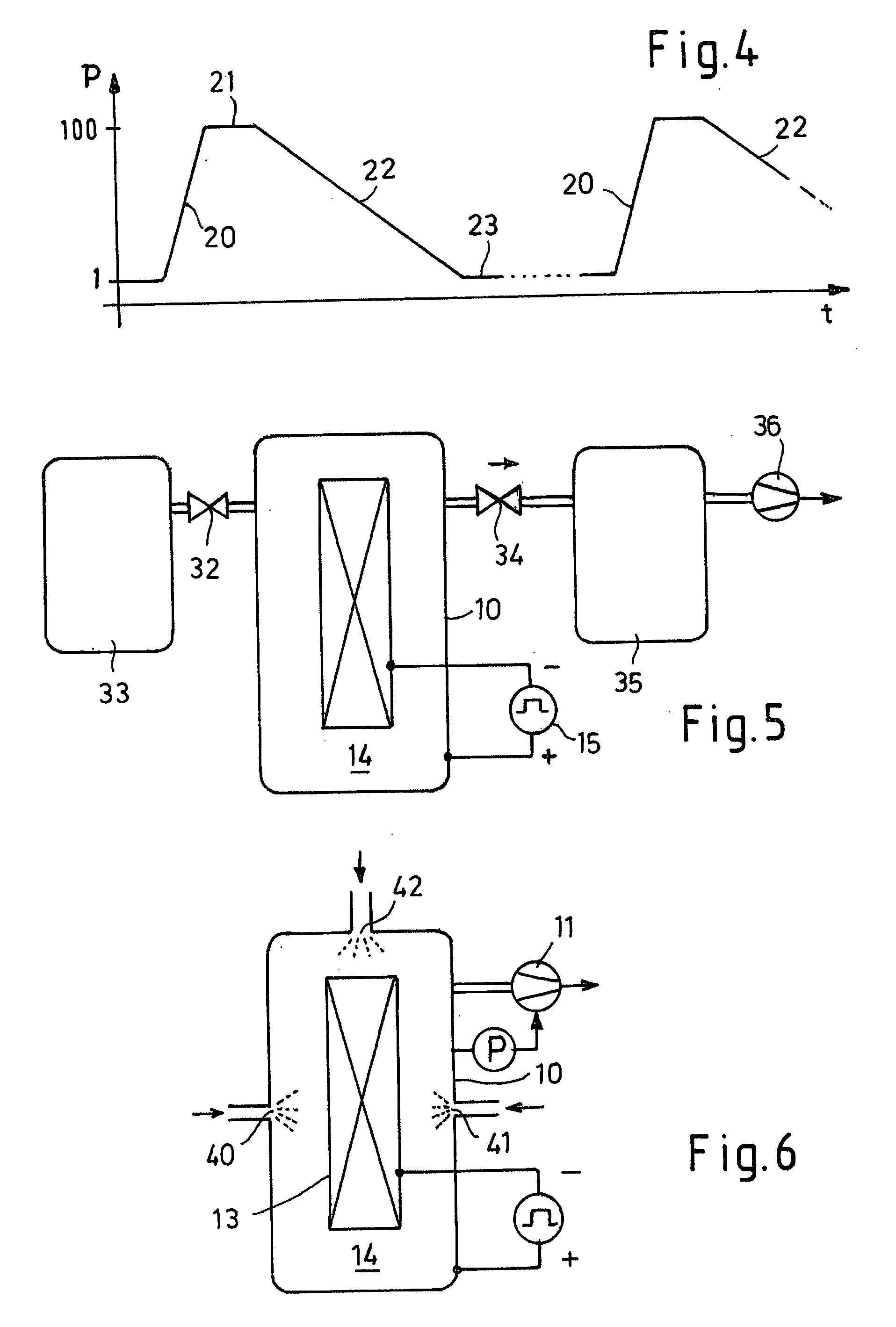Plasma process for surface treatment of workpieces
a workpiece and surface treatment technology, applied in chemical vapor deposition coatings, electrical devices, coatings, etc., can solve the problems of affecting the surface treatment effect, and requiring a longer period of time for the evacuation of the reactor by pumping, so as to achieve uniform surface treatment
- Summary
- Abstract
- Description
- Claims
- Application Information
AI Technical Summary
Benefits of technology
Problems solved by technology
Method used
Image
Examples
Embodiment Construction
[0021]FIG. 1 shows a pressure-tight reactor 10 in which a vacuum pump 11 can generate a vacuum. A process gas can be introduced into the reactor 10 via a valve 12 for the purpose of creating an atmosphere suitable for the plasma to be produced and for causing a mass transport, with the plasma, to a workpiece.
[0022] The reactor 10 includes a workpiece 13 arranged in a reactor space 14 in an isolated manner or at a defined potential and in spaced relationship to the reactor wall. The workpiece 13 is made of a conductive material, in particular metal. The wall of the reactor 10 is also made of metal. The wall of the reactor 10 and the workpiece 13 are connected to a voltage source 15. The positive pole of the voltage source 15 is connected to the wall of the reactor 10 which defines a counter electrode for the workpiece 13. The negative pole of the voltage source is connected to the workpiece 13. The voltage source 15 is a pulsed voltage source, for example, as described in DE 33 22 3...
PUM
| Property | Measurement | Unit |
|---|---|---|
| Dynamic viscosity | aaaaa | aaaaa |
| Force | aaaaa | aaaaa |
| Partial pressure | aaaaa | aaaaa |
Abstract
Description
Claims
Application Information
 Login to View More
Login to View More - R&D
- Intellectual Property
- Life Sciences
- Materials
- Tech Scout
- Unparalleled Data Quality
- Higher Quality Content
- 60% Fewer Hallucinations
Browse by: Latest US Patents, China's latest patents, Technical Efficacy Thesaurus, Application Domain, Technology Topic, Popular Technical Reports.
© 2025 PatSnap. All rights reserved.Legal|Privacy policy|Modern Slavery Act Transparency Statement|Sitemap|About US| Contact US: help@patsnap.com



